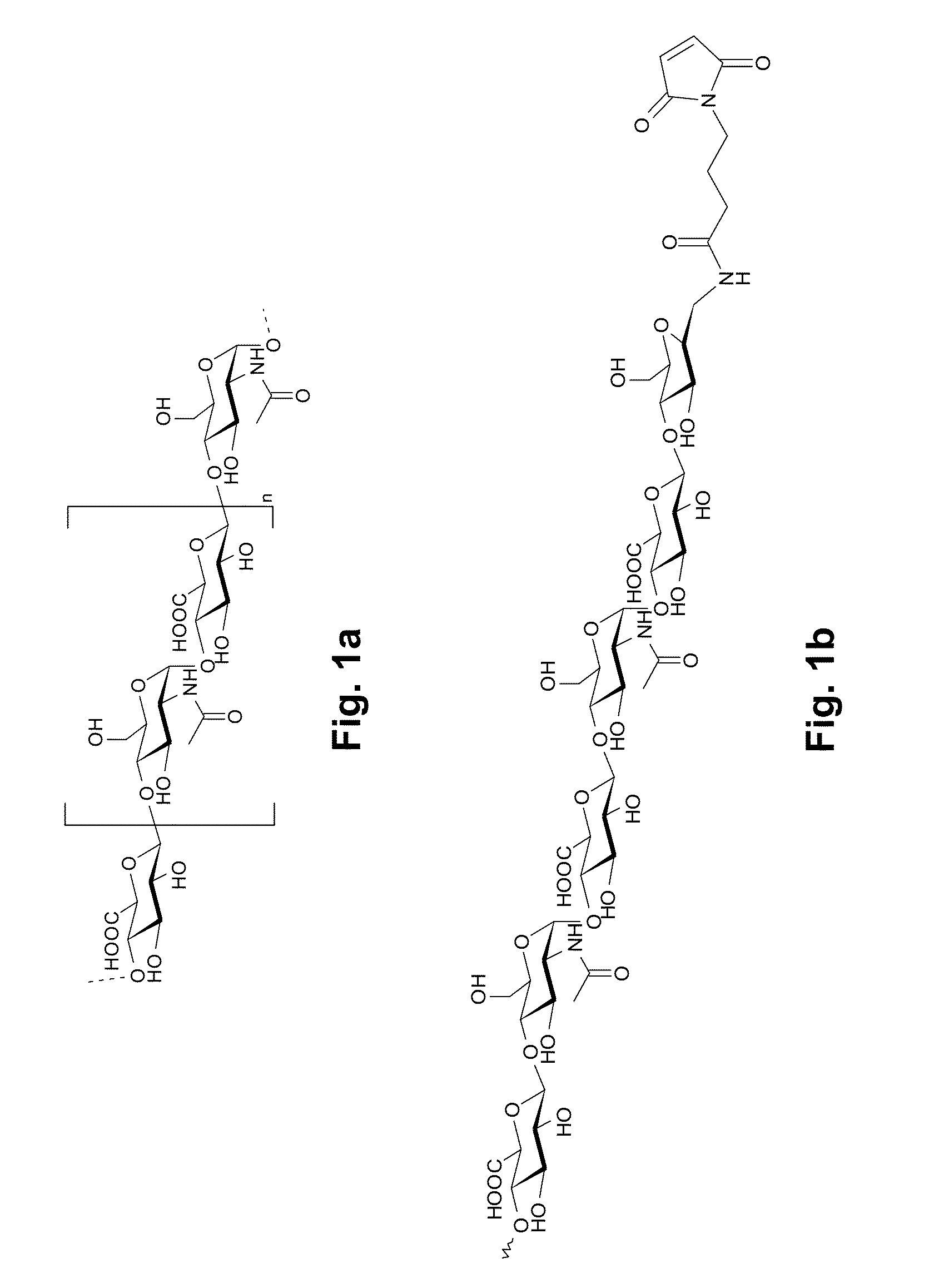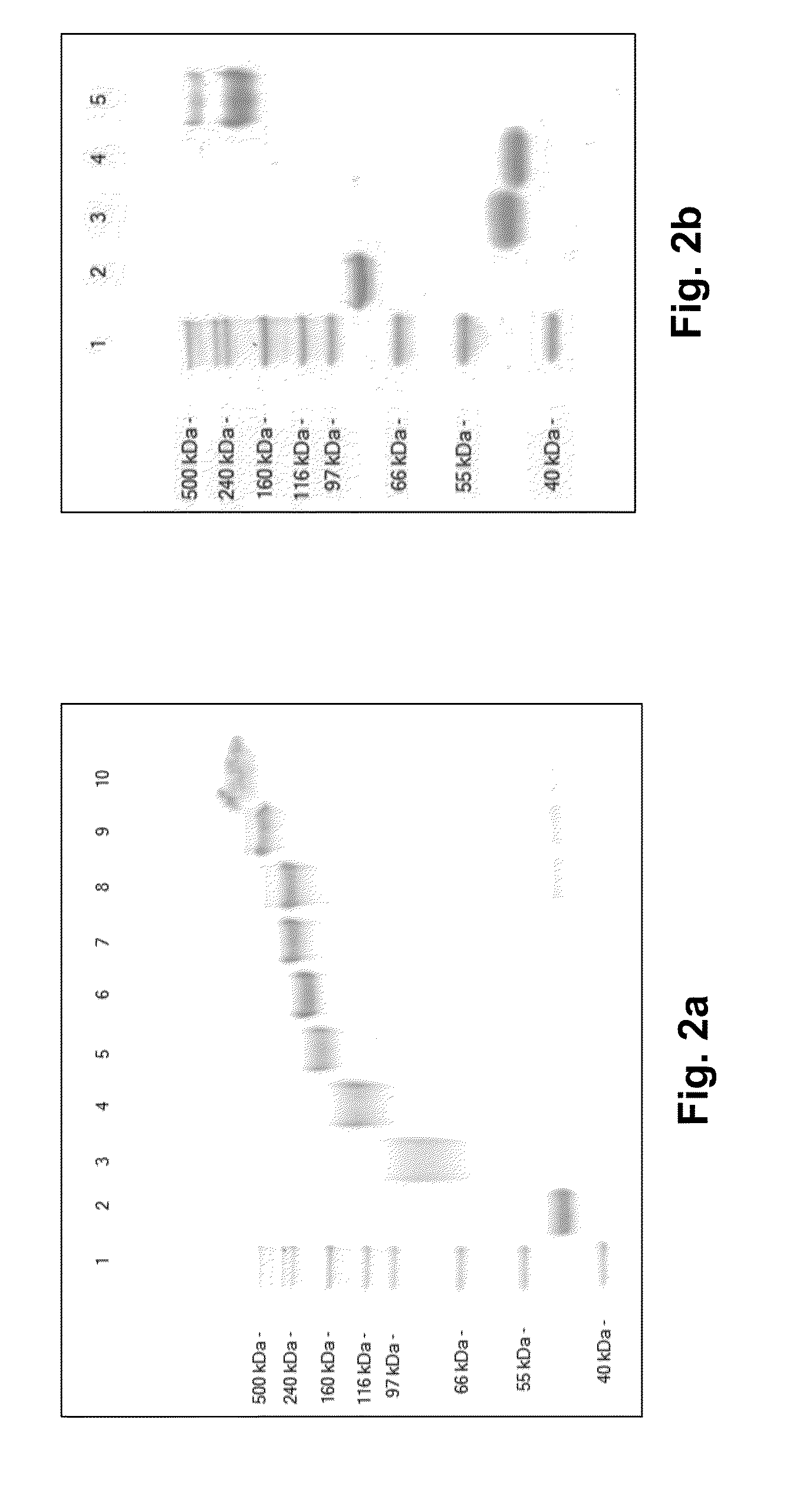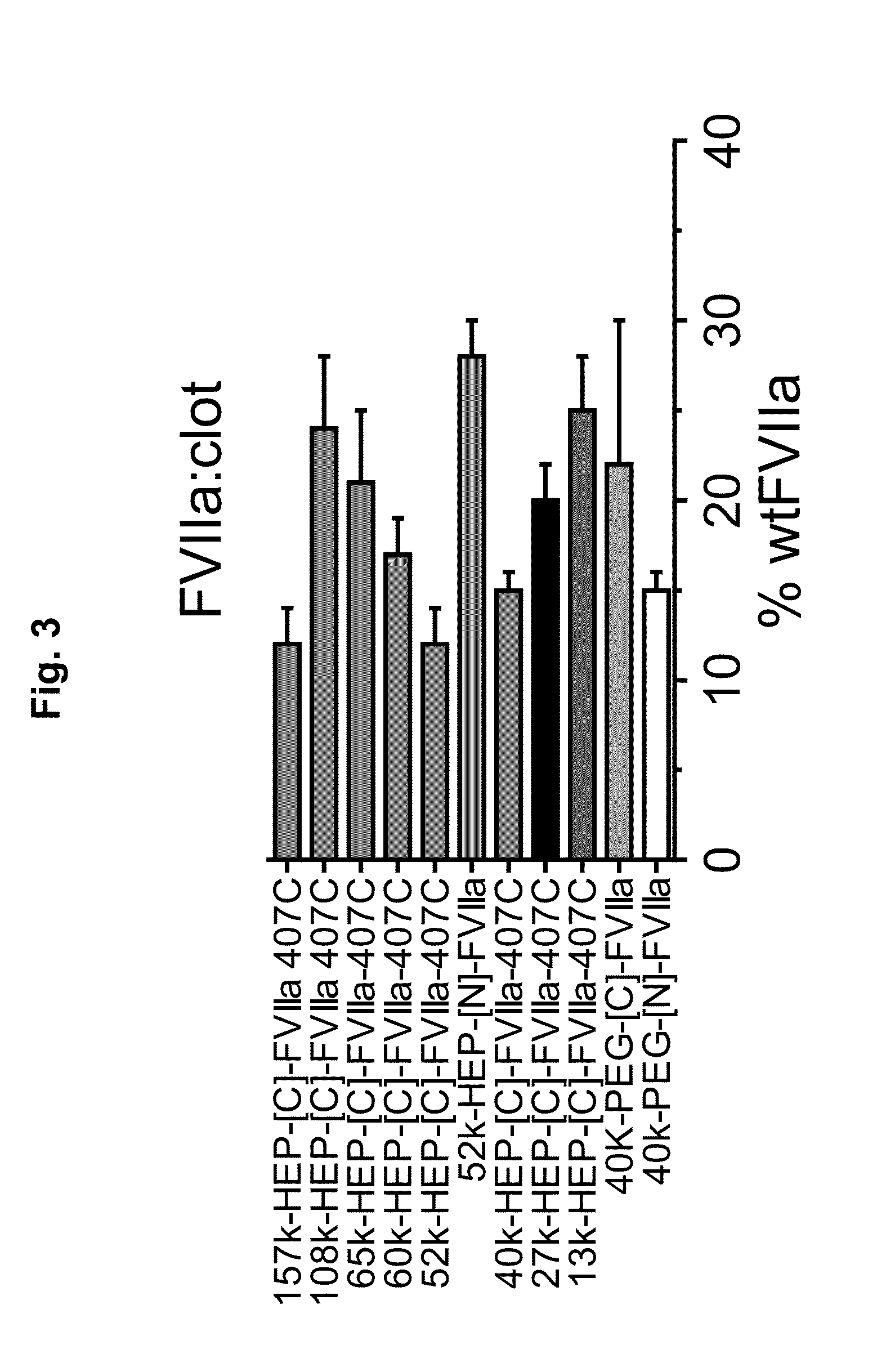Factor VII Conjugates
a technology of conjugates and factor vii, which is applied in the field of conjugation of factor vii polypeptides, can solve the problems of reducing the production of thrombin, loose unstable primary plugs of platelets, etc., and achieves the effects of improving the properties of factor vii polypeptide conjugates, prolonging their half-life, and increasing fixa and fxa generation potential
- Summary
- Abstract
- Description
- Claims
- Application Information
AI Technical Summary
Benefits of technology
Problems solved by technology
Method used
Image
Examples
example 1
Synthesis of HEP-Maleimide and HEP-Aldehyde Polymers
[0252]Maleimide and aldehyde functionalized HEP polymers of defined size are prepared by an enzymatic (PmHS1) polymerization reaction using the two sugar nucleotides UDP-GlcNAc and UDP-GlcUA. A priming trisaccharide (GlcUA-GlcNAc-GlcUA)NH2 is used for initiating the reaction, and polymerization is run until depletion of sugar nucleotide building blocks. The terminal amine (originating from the primer) is then functionalized with suitable reactive groups, in this case either a maleimide functionality designed for conjugation to free cysteines and thioGSC derivatives, or a benzaldehyde functionality designed for reductive amination chemistry to GSC. Size of HEP polymers can be pre-determined by variation in sugar nucleotide: primer stoichiometry. The technique is described in detail in US 2010 / 0036001.
The trisaccharide primer is synthesised as follows:
Step 1: Synthesis of (2-Fmoc-amino)ethyl 2,3,4-tri-O-acetyl-β-D-glucuronic acid met...
example 2
Selective Reduction of FVIIa407C
[0268]FVIIa407C was reduced as described in US 20090041744 using a glutathione based redox buffer system. Non-reduced FVIIa 407C (15.5 mg) was incubated for 17 h at room temperature in a total volume of 41 ml 50 mM Hepes, 100 mM NaCl, 10 mM CaCl2, pH 7.0 containing 0.5 mM GSH, 15 uM GSSG, 25 mM p-aminobenzamidine and 3 nM Grx2. The reaction mixture was then cooled on ice, and added 8.3 ml 100 mM EDTA solution while keeping pH at 7.0. The entire content was then loaded onto a 5 ml HiTrap Q FF column (Amersham Biosciences, GE Healthcare) equilibrated in buffer A (50 mM Hepes, 100 mM NaCl, 1 mM EDTA, pH 7.0) to capture FVIIa 407C. After wash with buffer A to remove unbound glutathione buffer and Grx2, FVIIa 407C was eluted in one step with buffer B (50 mM Hepes, 100 mM NaCl, 10 mM CaCl2, pH 7.0). The FVIIa 407C concentration in the eluate was determined by HPLC. 12.6 mg of single cysteine reduced FVIIa407C was isolated in 50 mM Hepes, 100 mM NaCl, 10 mM ...
example 3
Synthesis of 38.8 kDa HEP-[C]-FVIIa407C
[0269]Synthesis of 38.8k HEP-[C]-FVIIa 407C: Single cysteine reduced FVIIa 407C (25 mg) was reacted with 38.8K HEP-maleimide (26.8 mg) in 50 mM Hepes, 100 mM NaCl, 10 mM CaCl2, pH 7.0 buffer (8.5 ml) for 22 hours at 5° C. The reaction mixture was then loaded on to a FVIIa specific affinity column (CV=64 ml) modified with a Gla-domain specific antibody and step eluted first with 2 column volumes of buffer A (50 mM Hepes, 100 mM NaCl, 10 mM CaCl2, pH 7.4) then two column volumes of buffer B (50 mM Hepes, 100 mM NaCl, 10 mM EDTA, pH 7.4). The method essentially follows the principle described by Thim, L et al. Biochemistry (1988) 27, 7785-779. The products with unfolded Gla-domain was collected and directly applied to a 3×5 ml HiTrap Q FF ion-exchange column (Amersham Biosciences, GE Healthcare, CV=15 ml) pre-equilibrated with 10 mM His, 100 mM NaCl, pH 7.5. The column was washed with 4 column volumes of 10 mM His, 100 mM NaCl, pH 7.5 and 15 colum...
PUM
| Property | Measurement | Unit |
|---|---|---|
| molecular weight | aaaaa | aaaaa |
| molecular weight | aaaaa | aaaaa |
| molecular weight | aaaaa | aaaaa |
Abstract
Description
Claims
Application Information
 Login to View More
Login to View More - R&D
- Intellectual Property
- Life Sciences
- Materials
- Tech Scout
- Unparalleled Data Quality
- Higher Quality Content
- 60% Fewer Hallucinations
Browse by: Latest US Patents, China's latest patents, Technical Efficacy Thesaurus, Application Domain, Technology Topic, Popular Technical Reports.
© 2025 PatSnap. All rights reserved.Legal|Privacy policy|Modern Slavery Act Transparency Statement|Sitemap|About US| Contact US: help@patsnap.com



